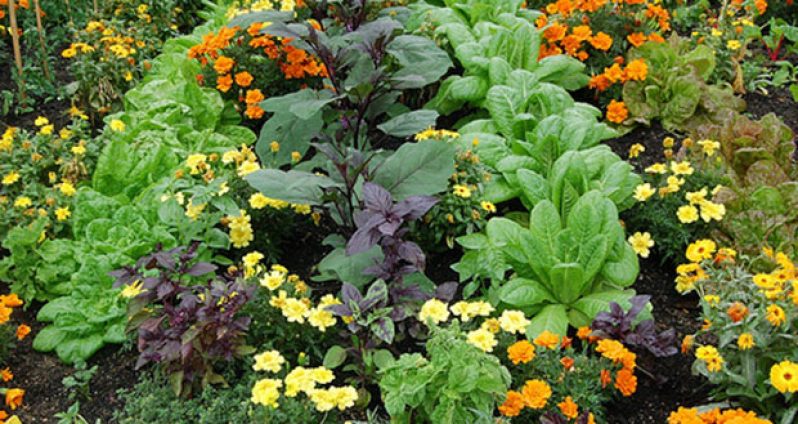Companion planting in gardening and agriculture is the planting of different crops in proximity for pest control, pollination, providing habitat for beneficial creatures, maximizing use of space and to otherwise increase crop productivity.]
Companion Planting has been promoted as a means of working in harmony with nature and is said to be the best way to help your garden become more productive.
This is so because the principles of this form of polyculture encompasses all of the relationships between plants that grow near or with each other.
It is important knowing which of these relationships are beneficial and which can be harmful.
Using companion planting throughout the landscape, for example, is an important part of integrated pest management.
Additionally, in many cases companions help enhance the growth rate and flavor of other varieties.
The death of one organism can create food for another, creating symbiotic relationships all around.
With respect to pest management, scientists have found that many plants have natural substances in their roots, flowers and leaves etc. that can alternately repel (anti-feedants) and/or attract insects depending on the needs of the gardener.
There are many varieties of herbs, flowers, etc. that can be used for companion plants.
By using companion planting, many gardeners can discourage harmful pests without losing the beneficial allies.
For example the smell of the foliage of marigolds is known to deter aphids from feeding on and damaging neighbouring crops.
Marigolds with simple flowers also attract nectar-feeding adult hoverflies, the larvae of which are predators of aphids.
This characteristic of the marigold plant has been described as predator recruitment and positive hosting.
Host-finding disruption (The insect’s perspective):
Recent studies by scientists on host-plant finding, have shown that flying pests are FAR LESS SUCCESSFUL if their host-plants are surrounded by any other plant not suitable for their purposes.
Old World Gardening website states that the host-plant finding by flying pests occurs in two phases: the first being stimulation by odours characteristic to the host-plant.
Insects, of course, avoid landing on brown (bare) soil.
It is the odour of that induces the insect to land on the plant it seeks.
So if only the host-plant is present, the insects will systematically find it by simply landing on the only green thing around.
This is called (from the point of view of the insect) an “appropriate landing.”
When it does what it finds to be an “inappropriate landing”, ie: its assessment of that plant is negative then the insect must start the process anew.
It flies off to the next nearby patch of green.
The second phase of host-plant finding is for the insect to make short flights from leaf to leaf to assess the plant’s overall suitability.
The number of leaf-to-leaf flights varies according to the insect species and to the host-plant stimulus/odour received from each leaf.
The insect must accumulate sufficient stimuli from the host-plant to lay eggs; so it must make a certain number of consecutive ‘appropriate’ landings.
Even “decoy-plants” made of green plastic, cardboard, or any other green material have been found to deter/ frustrate the flying pests.
They eventually leave the area (your garden) if they find that there are too many ‘inappropriate’ landings.”)
(TO BE CONTINUED)
(By Clifford Stanley)




.png)









